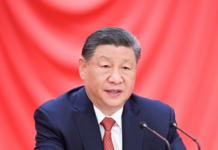The future of artificial intelligence (AI) is arriving at an accelerated pace, resh-aping industries and transforming how we live and work. The digital divide at both intra-society and inter-society levels is also getting wider at a similarly accele-rated pace. That being so, countries like Pakistan need to keep an active eye on this fast-paced phenomenon.
One of the latest advancements comes from Tesla, with the launch of its driverless taxi, or ‘robotaxi’, marking a significant leap in AI-driven transportation, and signalling the start of a mobility revolution. Additionally, Tesla’s ‘Optimus’ robots, designed for more complex tasks, offer a glimpse into a future where increasingly advanced and affordable robots are likely to become part of everyday life.
In parallel, Open AI’s recent release of advanced voice mode for audio chats highlights the fast-evolving nature of AI technology, allowing for sophisticated conversations that could soon replace call centres and other back-office jobs. These developments underscore the rapid pace at which AI is currently transforming the workforce and industries across the globe.
In particular, Amazon warehouses have become prime examples of increasing automation. With robots managing inventory, packing and logistics, the need for human labour is diminishing.
As such, Tesla’s driverless cars and Amazon’s automated warehouses are just the beginning. AI is poised to eliminate millions of jobs globally. Additionally, the trend of outsourcing manufacturing from the West to countries with cheaper labour could soon reverse as robots become capable of performing more complex tasks at lower costs.
Consequently, this technological shift may lead companies to relocate production back to Western countries, further transforming global labour dynamics as well as impacting economies reliant on the provision of low-cost labour.
Larry Fink, the head of BlackRock, the world’s largest asset management firm with $10 trillion in assets, recently stated that countries with aging populations, particularly in the West, will see a faster transition to AI and robotics. “The big winners are those with shrinking populations. They will develop robotics/AI, substituting humans for machines,” Fink was quoted as saying.
With fewer people available for labour, AI and robotics will provide solutions to workforce shortages, and, over a period of time, costs for these machines will continue to decline.
However, countries like Pakistan, with large youthful populations, face the risk of growing unemployment and social disparities as industries adopt robotics, leaving unskilled workers jobless.
While AI offers efficiency as well as innovation, it also raises concerns about employment and equity.
Now, governments and industries must manage technological progress to ensure it benefits everyone, or, else, society risks instability if AI-driven unemployment rises. A calculated, balanced approach is crucial to maintaining social harmony and sharing the benefits of AI widely.
ADIL HANIF GODIL
LONDON, UK






















